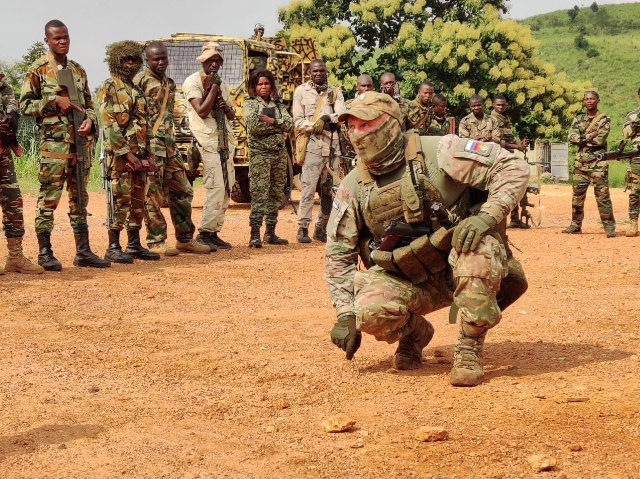
by Bob K. Mertens
Why the barbaric Wagner Group is not yet on the European Terrorist List remains a big question. The list offers numerous opportunities to take further sanctions and make our Western values and standards radiate.
Ukraine’s conflict has now entered its second year, and fierce fighting between the Russian troops and the Ukrainian Liberation Army continues in the Donbas region. In response to the ongoing crisis, the European Union has adopted its tenth round of sanctions, despite disagreements between Poland and Hungary. While Poland has criticized the package as being too lenient, Hungary has proposed the removal of certain entities from the existing sanctions list, according to EU sources.
Despite all these efforts, Europe could do more to address this pressing issue, particularly by adding the Wagner group to the European Terrorist List. Doing so would send the strong message that the international community will not tolerate their actions and will impose significant consequences on the group and its supporters.
| Total registered civilian casualties from 24 February 2022 to 5 March 2023 (per territory) | |||
| Territory | Total | Killed | Injured |
| Donetsk and Luhansk regions | 8,986 | 3,735 | 5,251 |
| Occupied territory by the Russian Federation | 4,312 | 1,851 | 2,461 |
| Other regions | 9,958 | 3,811 | 6,147 |
| Data source: OFFICE OF THE HIGH COMMISSIONER FOR HUMAN RIGHTS (OHCHR) | |||
What began as a small force of approximately three hundred Donbas-based mercenaries has grown into a fully-fledged army of around 50,000 soldiers fighting on the Russian side in the invasion of Ukraine over the course of eight years. This group is commonly known as the Wagner Group.
The Wagner Group is infamous for their ruthless tactics, led by Putin‘s close associate, Yevgeny Prigozhin (a future candidate for the Kremlin). Their appearance is a reflection of their behavior, and it is best to avoid them at all costs. The U.S. government has classified the group as an international criminal organization, while the European Parliament has labeled them as a terrorist organization. However, the group is not currently on the European terror list.
The reasons why both American and European institutions describe this group in such negative terms are abundantly clear. The group consistently violates international law and employs indiscriminate violence against civilians, as evidenced by United Nations reports. Furthermore, Wagner mercenaries in Africa have hindered the UN’s efforts to maintain peace and provide humanitarian aid. The group’s operations are international in scope, spanning across the Middle East, Sub-Saharan Africa, and Ukraine. However, above all else, it is clear that the Wagner Group serves as an instrument of Russian foreign policy, posing a significant threat not only to Ukraine but also to European interests. Wherever the group appears, Russia’s interests seem to be at stake, such as in the Syrian conflict, in the Central African Republic, and in the Libyan civil war. In short, the Wagner Group’s actions are tantamount to terrorism.
A closer look at the map reveals that Europe’s interests are gradually being eroded as the Wagner Group, serving Russia’s interests, continues to surround the continent with its units. While EU and NATO countries have focused primarily on arms deliveries and economic sanctions packages, it is clear that these measures alone are not enough. The Wagner Group’s activities extend beyond violence and brutality, as they exploit mines to export resources and spread propaganda to incite hostility towards the UN and the West. These tactics resemble those of terrorist organizations like ISIS and Al Qaeda, who also engage in violent acts, promote a political agenda, and engage in resource theft and anti-Western propaganda.
The EU needs a more strategic response to address this issue. To achieve greater resilience, the Wagner Group must be officially designated as a terrorist organization and “drained” of its resources, similar to what happens to other terrorist groups. For example, banks have been successfully fighting terrorism for over two decades through the “Know Your Customer” initiative, which requires financial institutions to identify whether transactions are linked to terrorist organizations. Banks could use this approach to identify any transactions related to diamond or gold trading that may be linked to the Wagner Group, weakening their position in their dealings with African governments.
However, before such actions can be taken, the Wagner Group must be added to the European Terrorist List. While the Parliament favors this move, the European Commission has not yet pursued it. The group clearly meets all the necessary criteria for inclusion, and with the proper designation, the banking system can become an effective tool in the fight against the Wagner Group and Russian aggression. The EU should act without delay to put the necessary measures in place.
